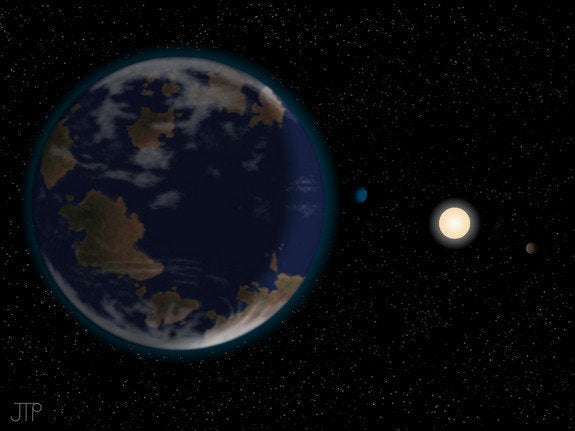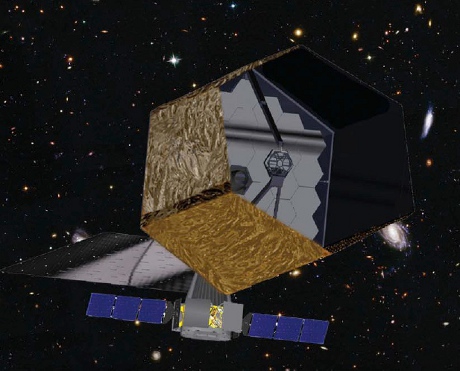
The question of whether extraterrestrial (ET) life exists (and in particular "intelligent" ET life) is arguably one of the most intriguing questions today. Not just scientists but people in general realize that the discovery of ET life would constitute a revolution rivaling the Copernican revolution in magnitude.
Here is a brief status report on where the quest for ET life is standing.
The endeavors take the form of a three-pronged attack. First, the searches within our own solar system can be performed using probes that either orbit or land on the target planets or satellites. The Curiosity rover on Mars, which has the ability to directly test for the existence of past (or present) life, is currently conducting one such search (Fig. 1 shows a photo taken by the rover). Future missions may explore the possibility of life on satellites of the giant planets, such as Europa (a moon of Jupiter), or Titan and Enceladus (two moons of Saturn).

Figure 1. Photograph of Martian landscape taken by the Mars Curiosity rover (credit: NASA/AP).
Second, in the searches for life in other solar systems, most astronomers take the patient, step-by-step route. That is, observations with ground- and space-based telescopes (in particular the Kepler observatory) have discovered (and will continue to discover) thousands of extrasolar planets (or planet candidates). In particular, astronomers are interested in those extrasolar planets that are in the "habitable zone" around their parent star. The habitable zone encompasses the relatively narrow range of distances from the star that allows for liquid water to exist on the planet's surface. The thinking is that the presence of a potent solvent facilitates the emergence of life by allowing molecules to come into contact with one another, thus creating the long chains that form the building blocks for life. The upcoming James Webb Space Telescope (to be launched in 2018) will even allow astronomers to identify those extrasolar planets that actually have liquid water on their surface. With the next generation of telescopes (such as the Advanced Technology Large-Aperture Space Telescope, or ATLAST, a planned large optical/ultraviolet space telescope; Fig. 2), astronomers will be able to take detailed spectra of the atmosphere of planets in habitable zones, and to determine whether any show clear biosignatures. For instance, the presence of oxygen and ozone is considered to be a fairly unambiguous sign for the out-of-equilibrium conditions created by living organisms.

Figure 2. Potential design for ATLAST, a 16-meter, segmented-mirror telescope. (Credit: Northrup Grumman Aerospace Systems & NASA/STScI)
The third prong of attack in the search-for-life adventure is led by astronomers at the SETI (Search for Extraterrestrial Intelligence) Institute. These researchers attempt to take a shortcut and use radio telescopes (such as the Allen Telescope Array) to detect radio signals that could be transmitted by an intelligent civilization. Though this experiment makes searching for a needle in a haystack look like child's play by comparison, the potential reward is enormous. So far, no clear sign for ET life was found in any of the searches.
I should note that in parallel to all these efforts, biologists here on Earth are making significant progress in experiments designed to create synthetic life in the lab (see my interview with Nobel laureate Jack Szostak).
How do we know that extraterrestrial life truly exists? We don't, but the chances are very good. The statistics of extrasolar planets to date point to the existence of at least a few billion Earth-like planets in our Milky Way galaxy alone. This does not mean that it will be easy to find intelligent ET life. Other civilizations may either be more advanced or less advanced than ours by billions of years. In either case it will be virtually impossible to communicate with such a civilization. However, we should remember that the only way to guarantee that we won't find anything is if we don't search!